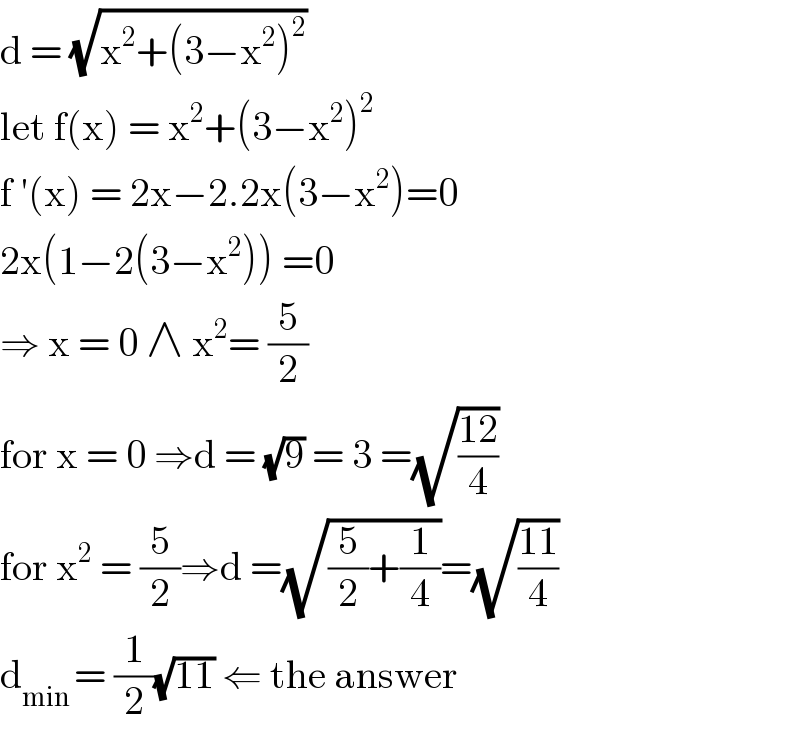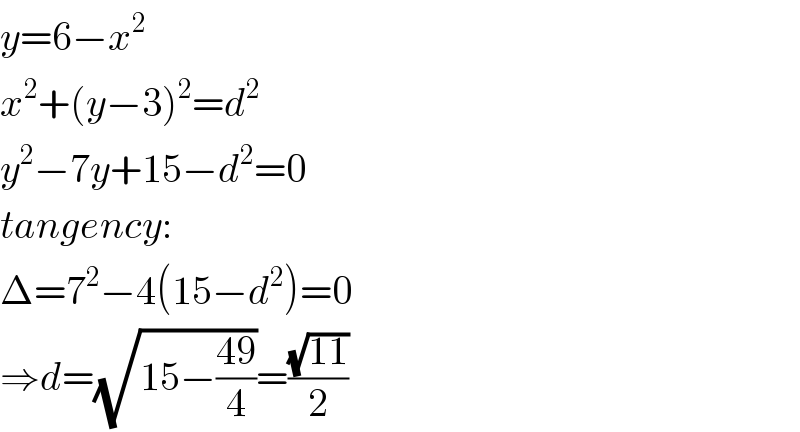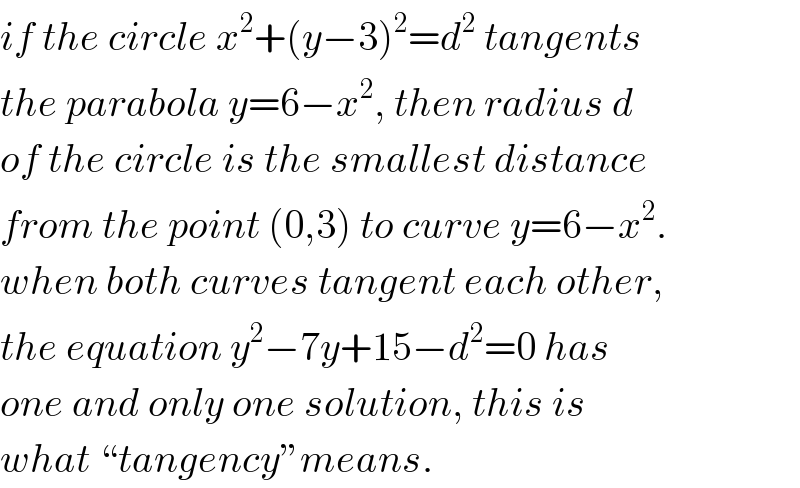
Question and Answers Forum
Question Number 83445 by naka3546 last updated on 02/Mar/20

Commented by MJS last updated on 02/Mar/20
![P= ((x),(y) ) = ((x),((6−x^2 )) ); distance^2 is x^2 +(3−x^2 )^2 =x^4 −5x^2 +9; (d/dx)[x^4 −5x^2 +9]=0 ⇔ x(x^2 −(5/2))=0 ⇒ x=0∨x=±((√(10))/2) ⇒ min at x=±((√(10))/2) ⇒ min dist. = ((√(11))/2)](Q83452.png)
Answered by john santu last updated on 02/Mar/20

Answered by mr W last updated on 02/Mar/20

Commented by john santu last updated on 03/Mar/20

Commented by mr W last updated on 03/Mar/20

